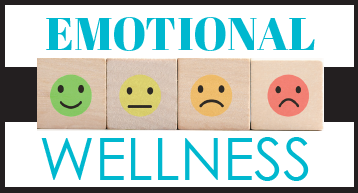Victor Cohen
In recent years,responding to plans to build a casino on Coney Island, right in our backyard, many throughout the community voiced their opposition to the project, and campaigned against it. Thanks in part to these efforts, the project has been struggling to receive the approval of the relevant municipal bodies.
The reason for the widespread opposition in our community should be clear and obvious. Easy access to a casino would, without question, lure many – particularly youngsters – to try out gambling. We all know that gambling is not only inconsistent with our Torah values, but also highly addictive, often destructively so.
Meanwhile, as this battle continues to be fiercely waged, a different gambling crisis has arisen – one which has already embedded itself deeply within our community: sports betting.
A Handheld Casino
Recent years have seen a surge of online sportsbooks and sports betting apps, which are promoted by torrents of advertisements. DraftKings, FanDuel, ESPNBet, BetMGM, and countless other sportsbooks offer free bets to ensnare newcomers. They also partner with celebrities and players, put out live promotions during games, and invest heavily in enticing users to keep betting on games. These sites and apps have, tragically, brought large numbers of youths into the clutches of gambling addiction, creating a whole generation of compulsive gamblers.
Let’s be honest about what many of these online sportsbooks are: a casino located in your pocket, or in the palm of your hand. They allow users to play the full range of typical casino games on their phone. Shockingly, every smartphone is now a Coney Island Casino.
This scourge of online gambling poses a grave threat to our community youngsters.
To learn more about this challenge, which has quickly become a full-fledged community crisis, I sat down with Ike Dweck, the founder of the SAFE foundation –an outpatient drug, alcohol, and gambling addiction facility, with clinics in Brooklyn and Deal. We spoke about the dangers of the sports betting apps, the tactics they use to get users hooked, as well as Ike’s own struggles with gambling and his heroic journey to break free of addiction. We also discussed potential solutions that are currently in the works, and warning signs for those concerned about a friend or child.
“They Don’t Really Care”
Already in 1992, Congress acted to protect our society from the dangers of sports betting, passing the Professional and Amateur Sports Protection Act, or PASPA, which prohibited states from allowing sports betting. But in 2014, the State of New Jersey, under governor Chris Christie, challenged the law’s constitutionality by legalizing sports betting within the state.
“People in New York would start gambling on their phones by just going over the bridge into New Jersey,” Ike recalled.
The NCAA (National Collegiate Athletic Association) sued the state, demanding that it enforce the federal law. The case continued under current New Jersey governor Phil Murphy and reached the Supreme Court in 2018. In Murphy v. NCAA, 584 U.S. 453 (2018), the Court voted to strike down PASPA, thus leaving the decision of whether to allow sports betting up to states. As more and more states followed New Jersey’s lead and legalized sports gambling, the industry of sports betting apps quickly surged, growing into the frightening behemoth that we unfortunately see today. In New York, due to lobbying from DraftKings and FanDuel, online sportsbooks became legal in January 2022.
And so when you turn 21, you are allowed to set up an account through an online sportsbook, which offers an enticing bevy of free bets. Most of the apps give you a few hundred dollars to “play” with. You cannot withdraw this money – you must spend it on a bet, playing their game. This is the primary method these online sportsbooks use to pull in innocent, unsuspecting users – they offer free bets, enabling the new customer to experience the thrill of gambling. This all but ensures that they will come back and continue playing with real money, and even long after these companies made back the money they “lost” by baiting the newbies.
“The website and casinos – they don’t really care,” Ike said. Why should they? They make loads of money off people’s addictions, hardships, and struggles – and will gladly continue to make money if left to their own devices. There is lots of money to be made from addicts. There is money to be made by placing all those expensive advertisements during sports games, given the potential for huge profit if they can get someone to sign up. There is money to be made by having a user place even just one too many bets.
The “free bets” convince your brain that gambling and betting is not just good, but exciting, something that gives you a high. Once that happens, you can easily get hooked and end up coming back again, again, and again – and the greatest thing any company can have is a repeat customer who uses its services frequently.
In other words, addiction is these businesses’ best friend. And so getting people addicted – and keeping them addicted – is their modus operandi.
A Minefield of Triggers
This brings us to their second important strategy –ubiquity. Flooding the internet and airwaves with advertisements helps not only to bring in new customers, but also to bring back customers who had succeeded in breaking loose.
A recovering alcoholic can avoid bars and liquor stores to protect himself from temptation. But a recovering sports betting addict has almost no way of avoiding the lure of gambling. An eye-opening essay in Scientific American(January 23, 2025) by Allison Parshalltitled,“How ‘Dark Patterns’ in Sports Betting Apps Keep Users Gambling” describes the difficult challenge faced by recovering gambling addicts trying to stay away from these apps: “A lapsed customer who receives a push notification, e-mail or text with an enticing ‘limited time’ offer for 10 ‘free bets’ might be someone with a gambling problem who is trying to quit.”
Parshall draws an analogy to a person dealing with alcohol addiction who, after several weeks of sobriety,is approached on his way to work by the fellow who runs his favorite bar, and he says, “Here, take a free shot of tequila!” It would be exceedingly difficult for the recovering alcoholic to decline. This is precisely what happens to recovering gamblers all the time.
“You can’t watch a baseball game without a commercial telling you to bet,” Ike said.
For a recovering addict, commercials promoting the online sportsbooks create a minefield of triggers that can easily get them sucked back in, especially considering the ease with which these apps can be accessed. One of the great benefits of modern technology – having everything at our fingertips, allowing us to check our email, write up proposals, fill orders, text, call, take pictures, work accounts, and do just about everything with just the tap of a few buttons – is a major pitfall for gambling addicts. The next bet is just a few button taps away. All it takes is the right advertisement during a football game, the right push notification at a time when the algorithm knows you’re looking at your phone, the right offer at the right time, to hook the recovering addict back in and get more money out of him.
It takes just a few taps on your screen to gamble away your entire week’s paycheck – and it takes the same amount of taps to lose a whole year’s paycheck, and even to bet away all your life’s savings. For a compulsive gambler, it is like a giant hole at the bottom of hisfinancial boat, which can cause it to sink at any moment.
Underage Gamblers
“Everybody’s desperate and thinks it’s easy to win,” Ike explained, further noting that although the apps ‘require’ you to be 21, it just does not work like that in practice. “People steal their parents’ credit cards, social security numbers, and open accounts as young as 13 or 14 years old. The email is in their name so their parents would never know.They’ll go on FanDuel and just open an account.”
Unfortunately, that is not the only way underage children can gain access to the online sportsbooks.
“They have friends who have brothers who have accounts who let them bet every night,” Ike says, and – just as in the case with drug addicts – once the money runs out to support their addiction, they find ways to get more. This could be by lying, manipulating those around them, or even stealing from their parents and pawning off jewelry. Once they are addicted, they will do whatever it takes to be able to continue their compulsively betting.
The SAFE foundation has, since its inception, always dealt primarily with alcohol and drug addiction, but this past year, the number of clinical assessments they conducted for gambling problems has risen by 48 percent. This dramatic increase offers a glimpse into how rapidly the issue has escalated.
It behooves us, then, to take a step back and ask ourselves: is this what we want for our future? Do we want the younger generation exposed to all this?
An Addict’s Recovery Story
In searching for solutions, there is perhaps no one better to listen to than Ike, who not only runs an organization that has been dealing with this issue for many years, but has also personally struggled with – and successfully overcome – a gambling addiction.
Ike began betting on sports when he was 12 years old. Back then, there were no sports apps, so he had to rely on other methods to place bets.
“When I was growing up,” he recalls, “there were no apps, so to bet you had to get a ‘bookie,’ who wasn’t the most honest guy in the world.”
He placed bets on all kinds of sports games, and as he got older, it took over his life.
“I couldn’t go on a vacation if it didn’t have a casino,”
His father asked him to join Gamblers’ Anonymous, and he was in and out for many years. However, he didn’t really listen to what they were telling him. This continued until he finally hit rock bottom at the age of 23. His life was out of control, he owed money to the bookies, and he was “sick and tired of being sick and tired.” He went back into Gambler’s Anonymous– and began to listen.
They told him to stop watching TV and stop reading the newspaper, because the sports section in the back could cause him to relapse. He was advised to make a list of all the people he owed, and to pay them back little by little. He was also advised to stop hanging out with the people he used to gamble with. With the help of Gambler’s Anonymous, Ike managed to find his way out.
Later, in 2003, Ike founded SAFE to help those plagued by addictions. He speaks at high schools throughout our community, telling his story and helping as many people as he can.
“Don’t Do This Yourself”
For those currently gambling who recognize that they need to stop, the most important thing is to reach out to a professional. Compulsive gambling is an addiction, and requires professional intervention to begin the path to recovery.
“Don’t do this yourself,” Ike pleads. “You need help. Even going to a Gambler’s Anonymous meeting could help.”
For the past nine months, SAFE has been lobbying New York State Senators, explaining to them the dangers of online sportsbooks and the prevalence of underage gambling, in an attempt to convince them to change the laws in New York. The problem, Ike says, is that the State makes a great deal of money from the taxes on the gambling companies’ revenue, and so the lawmakers are reluctant to impose restrictions.
Ike concluded by offering some helpful advice for those who are concerned about a friend or family member’s possible gambling addiction. Some warning signs, he says, are “if they’re borrowing money, or there’s a friend that always wants to play cards on Saturday night, or they’re staying up late for all the games.”
If you are worried about your child, he says, look for “missing jewelry, the kid not doing well in school, or if he’s also always asking to borrow money.”
Technology, with all its extraordinary advantages, has also presented several enormous challenges, some of which have received more attention than others. Ike and the rest of the SAFE foundation hope to draw the community’s attention to the challenge of gambling addiction, and to inform everyone of its unique risks. The first step to curing this destructive ill is spreading awareness. By working together to inform our youngsters of this alluring but dangerous activity, we can begin to tackle the problem of sports betting and help ensure a bright future for all our community’s youth.












